Kostya “Ken” Ostrikov is science superstar, or so we are made to believe. The Ukraine-born physicist is currently professor at the Queensland University of Technology in Australia, where he is celebrated for his H-index of 83, and for being “an acknowledged pioneer and leader in the rapidly emerging applied research area of Plasma Nanoscience” and “youngest Doctor of Sciences (D.Sc.) and a full professor in Ukraine (aged 29), 1997.“ He published over 1000 papers, around 100 a year, thanks to Asian collaborations. A paper every 3-4 days. Most of you can hardly read that many.
I first wrote to Ostrikov on 2 April 2023. Because it looks just wrong for a Ukrainian scientist to collaborate with russians and Iranians. Especially on fake, likely papermilled studies.
Boycott Russian Science (and Everything Else) – Thoughts on War in Ukraine
The state it’s in, we don’t need Russian science anyway.
First of all, in July 2022, several months into russia’s genocidal war against his home country (assisted by Belarus), he submitted for publication a manuscript where 5 of 6 other co-authors are from russia and Belarus, and even the 6th, Sweden-based co-author, is a Belarus-native:
Kirill Podbolotov , Dmitry Moskovskikh , Mohammad Abedi , Veronika Suvorova , Andrey Nepapushev , Kostya (Ken) Ostrikov , Alexander Khort Low-temperature reactive spark plasma sintering of dense SiC-Ti3SiC2 ceramics Journal of the European Ceramic Society (2023) doi: 10.1016/j.jeurceramsoc.2022.11.036
There are no obvious issues with this paper, but there are good reasons not to trust Ostrikov’s valued russian colleague Dmitry Moskovskikh (professor at National University of Science and Technology (MISIS) in Moscow) and his mentee from Iran, Mohammad Abedi. You will soon see why.
And then there was this July 2022 paper by Ostrikov with 5 Iranian co-authors, decorated with falsified spectra:
Ali Fatemi , Tavakkol Tohidi , Kazem Jamshidi-Galeh, Milad Rasouli, Kostya Ostrikov Optical and structural properties of Sn and Ag-doped PbS/PVA nanocomposites synthesized by chemical bath deposition Scientific Reports (2022) doi: 10.1038/s41598-022-16666-6

Ostrikov replied to me right away:
“First of all, THANK YOU! For alerting me about the issue with the paper in Sci. Reports and appreciate your views on scientific publications with peer scientists from Russia, Belarus, and Iran.
Let me assure you that I totally condemn the war in Ukraine, and at the very least because my old mother is in Kharkiv and she suffers a lot… I am trying to help my colleagues and friends from Ukraine whichever way I can… I also do not collaborate with institutions or projects in any of these three countries, just to make it clear. I am only trying to help very few young and aspiring people who do not have world-class opportunities for scientific research in their countries and want to build careers internationally, so to say “escape” for a better opportunity.
Both papers you mentioned involve such young people from Iran who aspire to “escape”. As far as I understand, the paper about ceramics you mentioned involves researchers from other countries, so it is a multi-national publication and small contributions from everyone.
I and my colleagues have had many students, postdocs from Iran and they developed as advanced and independent researchers no matter where life took them …
Regarding the paper in Sci. Reports – thank you again for highlighting the issue with the highlighted data. I have immediately checked the comment and contacted the first and corresponding author to carefully check the XRD spectra highlighted in the comment, and the original data.
I also carefully explained them the proper actions to take to respond to the comment, make corrections if this is just an error (e.g., in data processing, etc.) which does not affect the conclusions of the work, and other important details.
I cannot judge precisely right now because I do not have the necessary information.
Of course, if it turns out that any of the colleagues from Iran did anything wrong with the data, I will take proper actions. “
I pointed out to Ostrikov that not all of his co-authors, neither Iranian nor russian or Belarusian, are really junior researchers. All have PhD, all are heads of labs and facilities. Kazem Jamshidi-Ghaleh is even professor. They don’t really seem seeking to escape their terrorist home countries, rather to further advance their academic careers there, hence the papers with Ostrikov. Who replied to me:
“Thank you very much for the information. I never communicated with the senior researchers including Professor Jamshidi-Ghaleh you mentioned.”
An interesting way to do a scientific collaboration.
The incredible collaborations of Renaissance men and women
Nick Wise and Alexander Magazinov on the authorships-for-sale market on social media. Merely $700 for the 7th position on some paper way outside your expertise!
Soon after, the young and aspiring young Iranian man Milad Rasouli, who is or used to be affiliated with the Kharazmi University in Tehran, and author of 44 papers (several with Ostrikov), replied on PubPeer:
“We express our gratitude to an anonymous colleague for bringing this matter to our attention. There was an error in the plotting of Figure 1. Specifically, the spectral lines for 0.3 and 0.6 µM Ag and 0.4 and 0.8 µM Sn were plotted incorrectly. We apologize for any confusion or inconvenience that this error may have caused. However, we would like to assure you that this correction does not impact the overall results or conclusions of our study. The authors will contact the editorial team to publish an erratum. “
Rasouli also supplied a replacement figure. But my sleuthing colleagues still wanted to know how these peaks got duplicated. So Rasouli explained:
“To detect any minor changes, when the data were being interpreted, the data from the mentioned parts of the graphs were copied to be compared. We plotted this figure multiple times with this approach during the draft preparation. The target was to present any significant changes to the spectra with the additional Ag and Sn. However, when we were preparing the final version of the figure for publication, we inadvertently used the wrong plot used previously for comparisons. The original data have been deposited in the Zenodo database and can be downloaded at https://zenodo.org/record/7810837#.ZDWCBf5BxPY.”
Orchestes quercus wondered:

“Are you really saying that when you compare two curves you do not simply plot them together in a single figure, but instead cut & paste sections of the one curve into the other? And apparently shift & scale such that no steps are apparent. That seems a rather unconventional method…
I still have strong concerns about the veracity of the replacement data you provide in #2. Curves still share identical stretches of noise, just less obvious so as in the published version. Is the author sure he is not cheating a bit?“

I’m afraid Rasouli was cheating more than just a bit. But Ostrikov shared with me this:
“My understanding is that the proposed Erratum will contain not only the revised figure, but also the original data which the community could access and analyze. Why would anyone publish the revised data if there is something wrong with it, and especially if they know that it will be openly accessible?
I understand that the corresponding author will discuss the proposed corrections with the Editor and the most appropriate action (e.g., Erratum or some other way of correction) will be found. I heard that they disagree with the recent comment (both scientifically and the comments involving behavioural presumptions) and are very confident to publish the corrected data.“
Well. Ostrikov is supposed to be an expert in this field. If fake spectra in the figure AND in the “original data” don’t change the scientific conclusions for him, what does? How does he run his own science then?
The Highly Cited Researchers of Clarivate
“here is my advice to Clarivate: better get lost. ” – Alexander Magazinov
That’s how.
On 28 July 2023, Ostrikov and his Iranian colleagues issued a Correction:
“The original version of this Article contained errors in Figure 1. During preparation of Figure 1 some of the data has been inappropriately superimposed. As a result, in Figure 1A a section of the spectrum for the “0.6 μM Sn” condition overlapped with a corresponding section in the spectrum of the “0.3 μM Sn” condition. A section of the spectrum for the “0.8 μM Ag” condition overlapped with corresponding sections in the spectra for “0.4 μM Ag” in Figure 1B, and “0.6 μM Sn” and “0.3 μM Sn” conditions in Figure 1A.”
The bad Figure 1 was replaced with this new version:
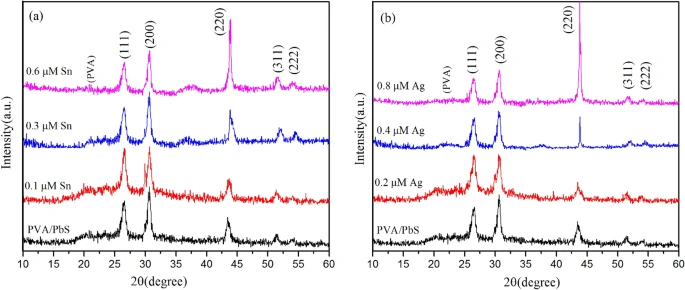
However, the new Figure 1b is fake also. Worse, the problem was already flagged on PubPeer in April 2023. But hey, Scientific Reports already accepted the correction, and Kostya is a science superstar, so the case is closed. Here again what was NOT corrected:
More recently, Ostrikov was caught on publishing a massive forgery with the russians: Alexander Mukasyan (presently professor at University of Notre Dame in USA) and the above-mentioned Dmitry Moskovskikh. The russo-iranian papermilled fabrication was submitted to MDPI in August 2022 and published in October 2022. Is this how Ostrikov tried to console himself over the Iran-assisted russian genocide on his home country?
Mohammad Abedi, Atefeh Asadi , Saeed Sovizi , Dmitry Moskovskikh , Kostya (Ken) Ostrikov , Alexander Mukasyan Electrical and Heat Distributions and Their Influence on the Mass Transfer during the Flash Spark Plasma Sintering of a Cu/Cr Nanocomposite: Experiments and Numerical Simulation Materials (2022) doi: 10.3390/ma15207366





The MISIS-affiliated first author and Moskovskikh’s mentee Mohammad Abedi replied with a lengthy word salad on PubPeer, ending with:
“Consequently, at the nanoscale level scrutinized in this study, the manifestation of the atypical microstructure, often described as “similarities,” is entirely anticipated and substantiated as a direct consequence of the potent applied current within the material. Once again, I extend my heartfelt appreciation for your attention to this matter.“
And then, the russia-born and trained last author Mukasyan declared on PubPeer:
“The first part of the investigation is accomplished. We found all original SEM images used in the paper. […] We continue our investigation. We plan to contact the journal manager on this issue Thank you for your patient”
The “raw data” Mukasyan uploaded was completely fake. Look at the overlay Orchestes quercus made:

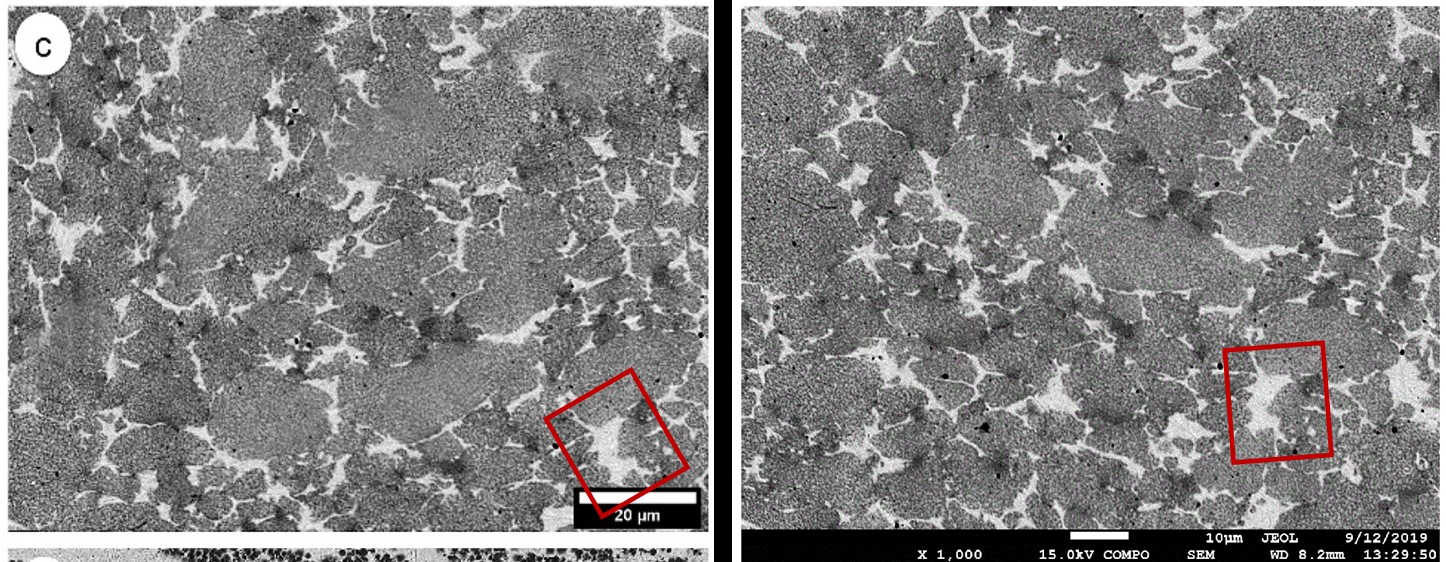
Mukasyan’s reaction was worthy of his foreign minister sergei lavrov (highlight mine):
“Dear Colleagues We are finishing the investigation of the case. Several statements we want to make: (a) We sincerely apologize for the misconduct; (b) We found that in the last stage of Figures preparation, the person who was responsible for the collage made the outlined changes (c) I was told that the person is not co-author of the paper (d) We are currently discussing the options with the Journal Editor. Again our apology Best regards”
Aggressive and shameless lying is apparently what russians are trained in already in kindergarten.
It is worth mentioning that the papers by this trio of Abedi, Moskovskikh and Mukasyan got cited block-wise and in totally unrelated context by notorious papermillers, like here by Dumitru Baleanu (He et al 2022), Rasool Kalbasi (Abbasian-Naghneh & Kalbasi 2022, Abidi et al 2021) Amir Mousavi (Liu et al 2022), Iskander Tlili (Wei et al 2022) or Arash Karimipour (Miyani et al 2022). For example, the Abedi et al 2022 paper is cited as reference 36 in Karimipour’s Azodinia et 2023:
“Numerical studies are widely used in research fields [34–36].”
More is on PubPeer, and rest assured: Iran is sure russia’s friend, but russians get nothing from Iran for free. Both the Shahed killer drones and citations must be paid, in hard currency and in kind. How Ukrainians like Ostrikov and some other Ukrainians can participate in such “collaborations”, is beyond my ability to understand.
Taras Persidskyy and Arik of Negev, Shahed Hunters
“He has embarked on a path of unacceptable slander, not only against me, but also against my colleagues (Prof. Oleg Smutok, Prof. Arnold Kiv, Prof. Vladimir Solovyov). We have all the necessary evidence to bring Leonid Schneider to justice for slander and moral turpitude.” – Taras Kavetskyy.
I notified Mukasyan’s employer, the Notre Dame University in USA. They refused communication, maybe because I outed myself as Ukrainian. This catholic university even kind of silently admitted that they approve of the ecumenic scam their professor runs with Iranians and fellow russians.
Elisabeth Bik also had a look at Mukasyan’s other papers, the results are on PubPeer:

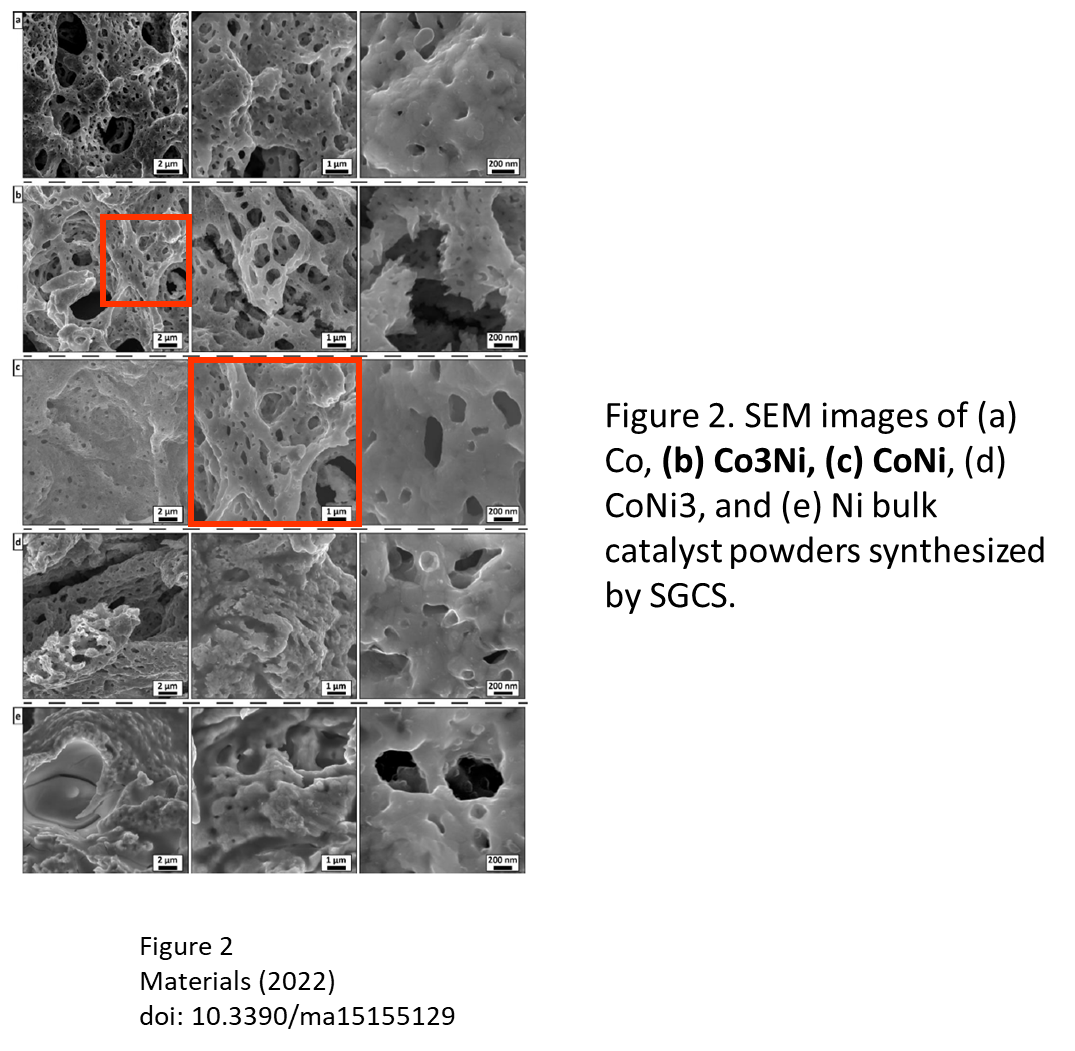
Bloody papermill scammer Seeram Ramakrishna, he is everywhere! This Singapore professor for “circular economy” was briefly mentioned here:
Dr. Mohammad Arjmand showcases his work to German President Steinmeier
“The German President and delegation members also spoke with researchers working on challenges relating to clean energy,…”
Here another Moskovskikh paper, also flagged by Elisabeth Bik. Such a pity Moskovskikh and Abedi did not invite Ostrikov as coauthor:
Stepan Vorotilo, Kirill Sidnov , Alexey S. Sedegov , Mohammad Abedi , Kseniia Vorotilo , Dmitry O. Moskovskikh Phase stability and mechanical properties of carbide solid solutions with 2–5 principal metals Computational Materials Science (2022) doi: 10.1016/j.commatsci.2021.110869
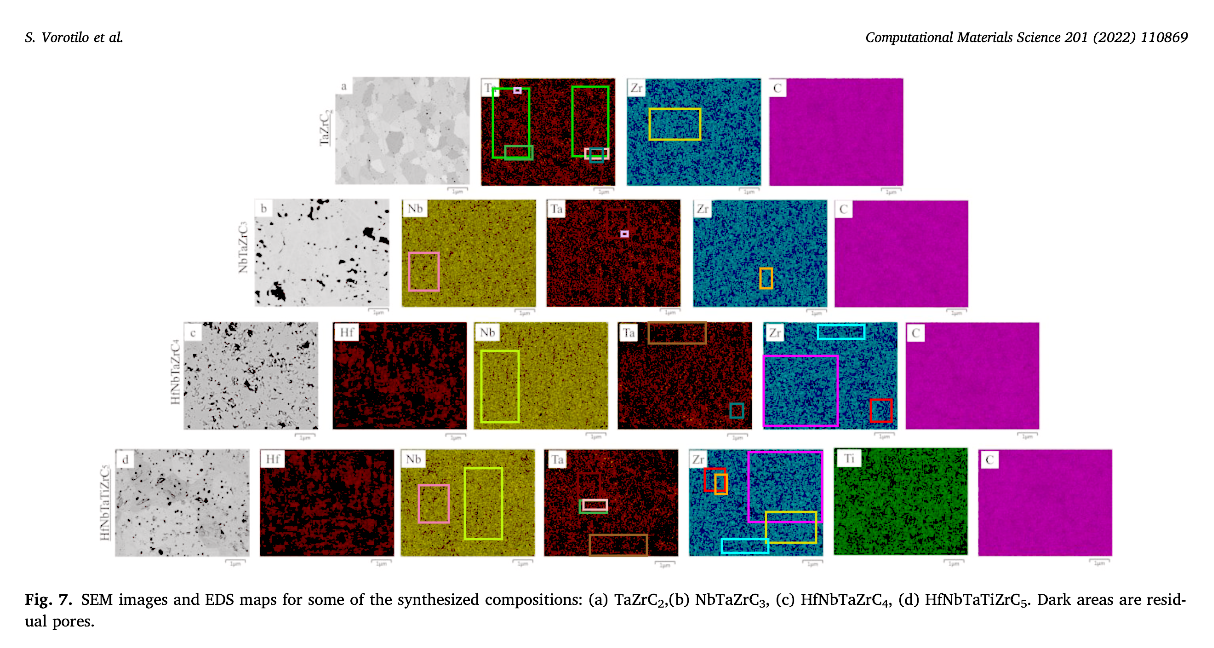
A close-up:
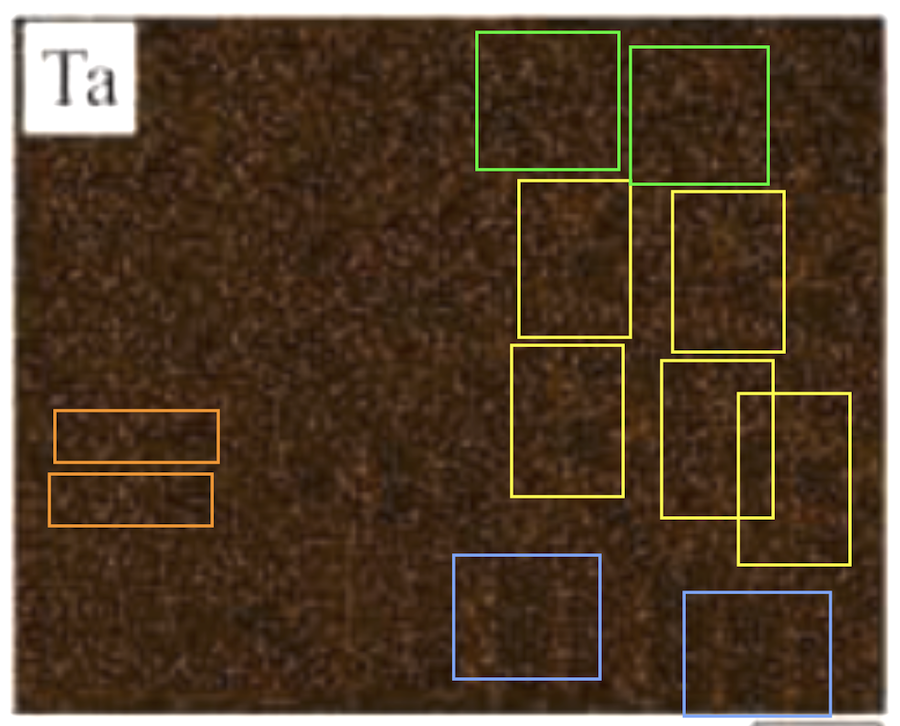
The reaction by Moskovskikh (highlight mine):
“Dear Dr Elisabeth BIK,
Thank you for bringing your concerns to our attention. We hold academic integrity in the highest regard and are committed to upholding the trust and credibility of our research community. In light of your comment, we have initiated an internal review to thoroughly investigate the allegations of data manipulation. Our objective is to ensure the veracity of our research and to take preventive measures against any potential lapses in the future.
While we do not condone any form of data manipulation, our preliminary assessment suggests that the core findings and conclusions of our paper remain intact despite the alleged discrepancies. Therefore, we believe that a retraction may not be necessary at this juncture. However, we will rigorously re-examine the SEM and EDS data in question. Should any discrepancies be confirmed, we commit to re-collecting the relevant data and publishing a corrigendum to rectify the issue.
Once again, we appreciate your vigilance in ensuring the integrity of scientific discourse and will keep the community updated on our findings.
Warm regards, Dmitry”
This russian cheater openly admits that all the data in his paper is fake, but laughs at his critics, cocksure that nobody can touch him. Kind of reminds of russian behaviour at UN.
That paper brings us to Moskovskikh’s co-authors at MISIS, Stepan Vorotilo and Philipp Kiryukhantsev-Korneev, fellow co-recipients of bought citations from Iranian papermills. I wonder if Ostrikov will want to make some papers with these russian crooks as well:
Stepan Vorotilo , Pavel Alexandrovich Loginov , Alexandr Yuryevich Churyumov , Alexey Sergeevich Prosviryakov, Marina Yakovlevna Bychkova, Sergey Ivanovich Rupasov , Anton Sergeevich Orekhov, Philipp Vladimirovich Kiryukhantsev-Korneev, Evgeny Alexandrovich Levashov Manufacturing of Conductive, Wear-Resistant Nanoreinforced Cu-Ti Alloys Using Partially Oxidized Electrolytic Copper Powder Nanomaterials (2020) doi: 10.3390/nano10071261
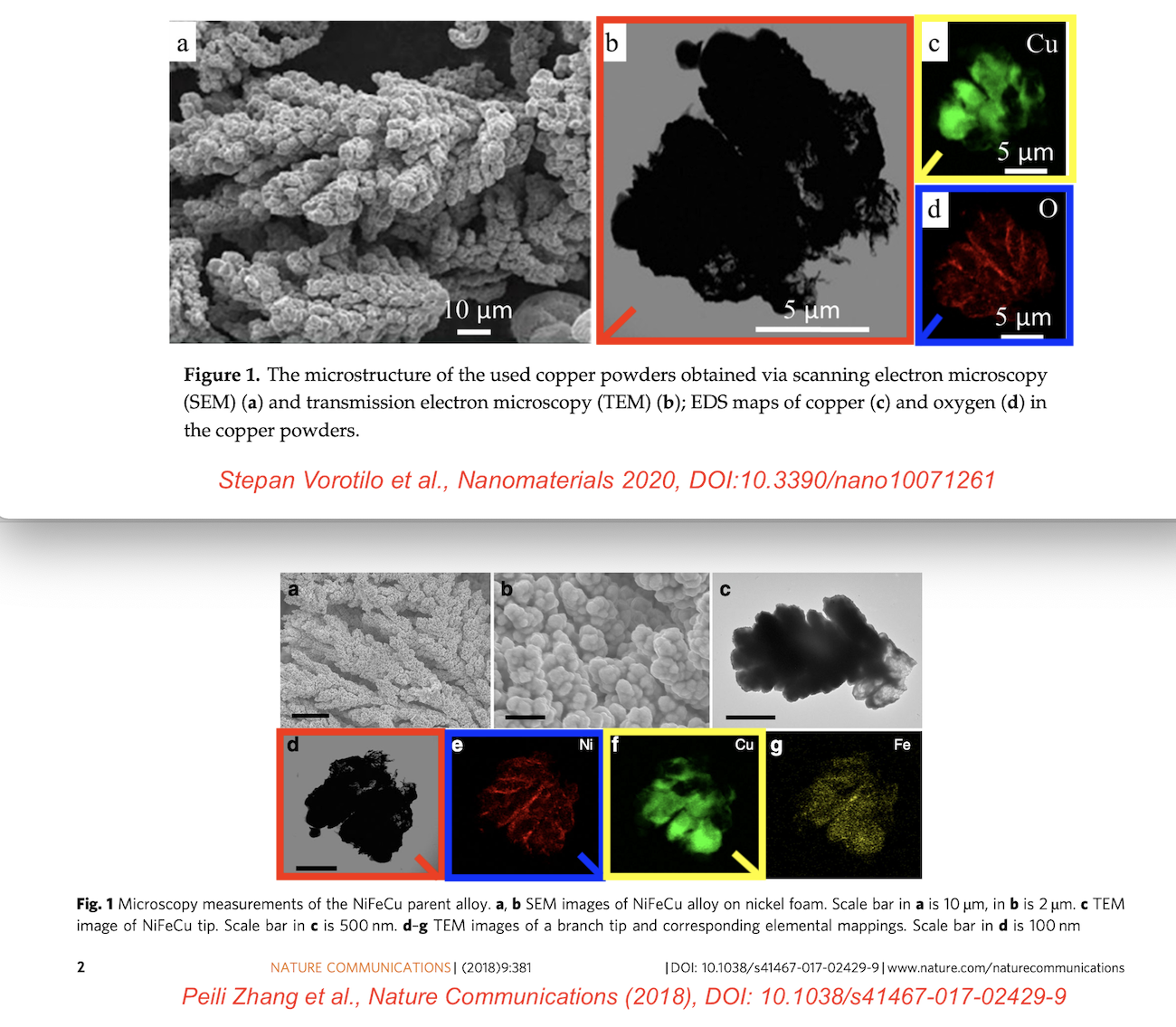

Needless to say that Vorotilo et al 2020 shares no common authors with Zhang et al 2018 or Yaman & Taga 2018. Robbery of research data, just like of TVs, used underwear and toilets is apparently also what russians learn already in the kindergarten. In any case, this is outright plagiarism. On the other hand, this is MDPI, who will probably say that the theft and fraud never affected any conclusions and no action is needed.
Russkiy Mir at Elsevier and MDPI
Alexander Magazinov presents you two russian professors whom Elsevier and MDPI consider respectable: a Lt Colonel of putin’s mass-murdering army, and a machine-gun totting rascist. Both buy from papermills.
Here are Vorotilo, Kiryukhantsev-Korneev and Evgeny Levashov again. Freshly published, and in case you wonder: such small repetitive areas arise when authors needed to erase original labels from stolen figures:
Yu. S. Pogozhev, A. Yu. Potanin , S. I. Rupasov , F. V. Kiryukhantsev-Korneev , E. A. Levashov Self-Propagating High-Temperature Synthesis and Consolidation of MoSi2–MoB Heterophase Ceramics Alloyed with ZrB2 International Journal of Self-Propagating High-Temperature Synthesis (2023) doi: 10.3103/s106138622303007x
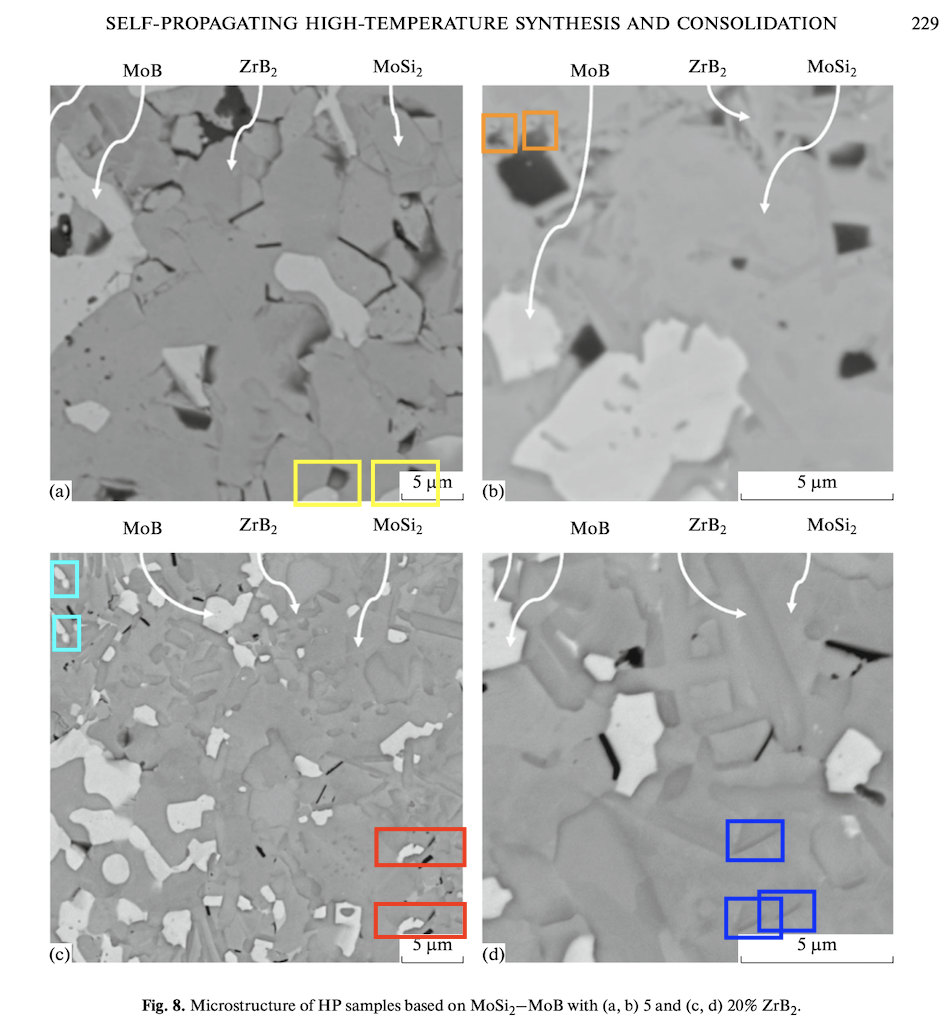
Back to Ostrikov. Most of his hundreds of papers are about plasma and the various creative applications thereof. Even with plasma-activated water in agriculture and food chemistry (eg, Li et al 2023), even for SARS-CoV-2 detection with plasma-engineered sensors (e.g., Yeh et al 2022), even to cure cancer (Dai et al 2023, Dai et al 2022) and ischaemic stroke (Chen et al 2022). In a predatory journal, Ostrikov suggests to inhale cold atmospheric plasma to prevent COVID-19 (Wang et al 2022). Sometimes, our Renaissance Man and his Chinese partners really struggled to establish a connection to plasma, except to cite own papers:
Xiaofeng Dai , Xinyu Lv , Erik W. Thompson , Kostya (Ken) Ostrikov Histone lactylation: epigenetic mark of glycolytic switch Trends in Genetics (2022) – doi: 10.1016/j.tig.2021.09.009
Evil tongues of failed scientists might say that questionable characters from Asia keep approaching our esteemed Australian professor with offers of co-authorship on randomly-themed manuscripts, and get instructed to shoehorn in a plasma reference. Perish the thought!
Anyway, here is another oncoplasma breakthrough by Ostrikov, with a bunch of Iranians from Kharazmi University led by Milad Rasouli (whom you met above) plus a Frenchman as last author, Eric Robert from University of Orléans:
Milad Rasouli , Hassan Mehdian , Kamal Hajisharifi , Elaheh Amini , Kostya (Ken) Ostrikov , Eric Robert Plasma‐activated medium induces apoptosis in chemotherapy‐resistant ovarian cancer cells: High selectivity and synergy with carboplatin Plasma Processes and Polymers (2021) doi: 10.1002/ppap.202100074
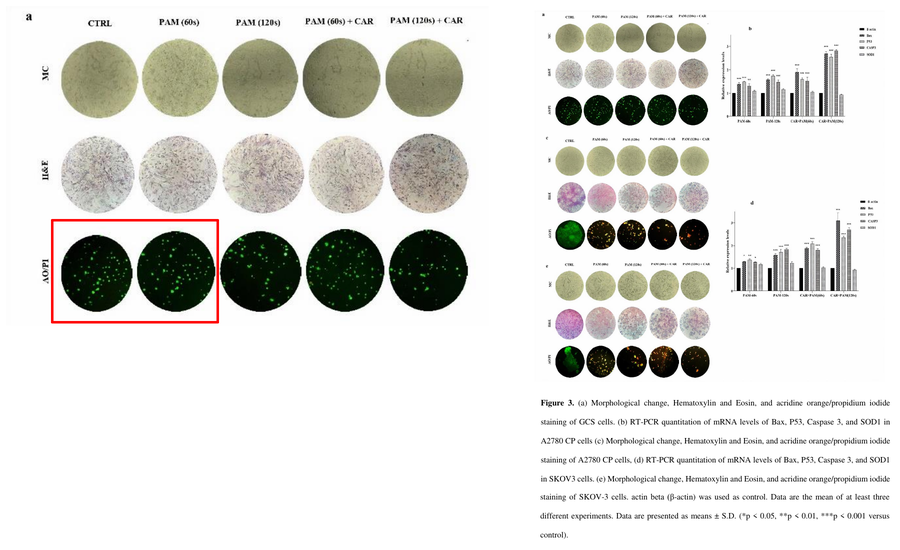
It’s not just the duplication. The study says: “All surgeries were performed under deep anesthesia, and all efforts were made to minimize suffering.” But no surgeries are mentioned in the paper, the authors claim to have used tissues from dead mice: “Ovarian Granulosa cells (GCs) were extracted from NMRI mice 21-24 aging days (Royan Institute). After the mice sacrificed, GCs cells were extracted…” Was the odd text about surgeries a leftover from a papermill template?
Thanks to Rasouli, Ostrikov also had the high honour to collaborate with a certain Iranian decorated with no less but THIRTY-SIX retractions: Mahmood Ghoranneviss. In 2022, the trio published four papers and conference abstracts: Amini et al 2022, Fatemi et al 2022, and, just do appreciate the topics please:
- Rasouli et al, “Arc and pulsed spark discharge inactivation of pathogenic P. aeruginosa, S. aureus, M. canis, T. mentagrophytes, and C. albicans microorganisms” Environmental Science and Pollution Research (2022) doi: 10.1007/s11356-022-19847-y
- Amini et al, “Synergistic cellulose-based nanocomposite packaging and cold plasma decontamination for extended saffron preservation” Scientific Reports, (2022) doi: 10.1038/s41598-022-23284-9
Kostikov’s plasma not only kills all bacteria, it also protects saffron. In 2018, Retraction Watch wrote about Ghoranneviss’ retractions, back then he was a introduced as a victim of someone else’s misconduct:
“After we reported Elsevier’s plans to retract 26 papers, Mahmood Ghoranneviss, dean and director of the Plasma Physics Research Center at Islamic Azad University (where Elahi works), sent us a statement regarding Elahi’s “unlawful activities,” and told us:
“As soon as we learned what Ahmad Salar Elahi has been doing we introduced him to the disciplinary committee of the university.”
Ghoranneviss was a co-author on several of Elahi’s papers:
“As far as we learned from “Retraction Watch” report, the authorship lists were changed and my name was added later. … He, as the corresponding author of the articles, should have had our approval beforehand.”
Although the university has not made a final decision, Ghoranneviss said he believes that Elahi will likely “be sacked from the university with an immediate effect:”
“Meanwhile, I personally suspended him from all his duties and removed him from all his teaching classes and from the supervision of post-grad students. His illegal action has caused an angry backlash and very strong negative reaction not only in our university but also in many academic institutes and research centers in Iran.”
German Authorities on Papermills and Whistleblowing
“I am not familiar with Iranian papermills!” – Prof Dr med Henning Madry, Saarland University.
Now it is 36 retractions for Ghoranneviss, all with Elahi. The Azad University dean, who expects his name on every forgery someone from his fiefdom publishes, plays the hero of research ethics when caught. What a great guy to work with. Ostrikov must have thought.
Before discovering distance-science with Iranian and russians, Ostrikov relied on Chinese lab members:
Renwu Zhou , Rusen Zhou , Xianhui Zhang , Jiangwei Li , Xingquan Wang , Qiang Chen , Size Yang , Zhong Chen , Kateryna Bazaka , Kostya Ostrikov Synergistic Effect of Atmospheric-pressure Plasma and TiO Photocatalysis on Inactivation of Escherichia coli Cells in Aqueous Media Scientific Reports (2016) doi: 10.1038/srep39552
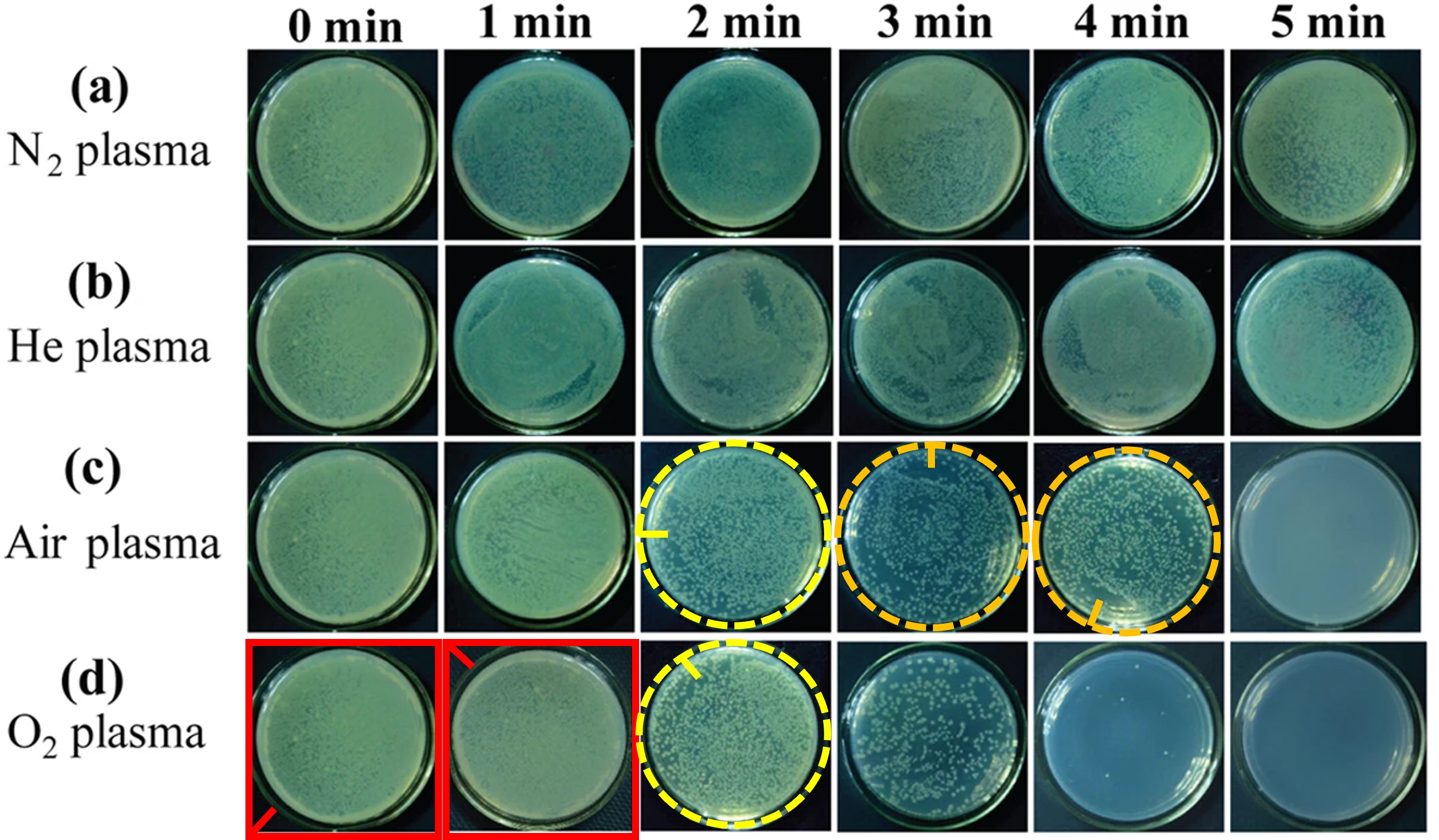
Ostrikov’s mentee Xianhui Zhang stated on PubPeer in July 2023:
“We have thoroughly verified that the image error identified does not impact the results presented (Fig. 3e) and the scientific conclusions of our paper. l apologize on behalf of all coauthors for this accidental mistake. We will contact the editorial office for correcting the error as soon as possible.“
Or this, with similar authors:
Peiyu Wang , Rusen Zhou , Renwu Zhou, Nina Recek , Karthika Prasad , Robert Speight , Derek Richard , Patrick J. Cullen , Erik W. Thompson , Kostya Ken Ostrikov, Kateryna Bazaka Chemo-Radiative Stress of Plasma as a Modulator of Charge-Dependent Nanodiamond Cytotoxicity ACS Applied Bio Materials (2020) doi: 10.1021/acsabm.0c01000

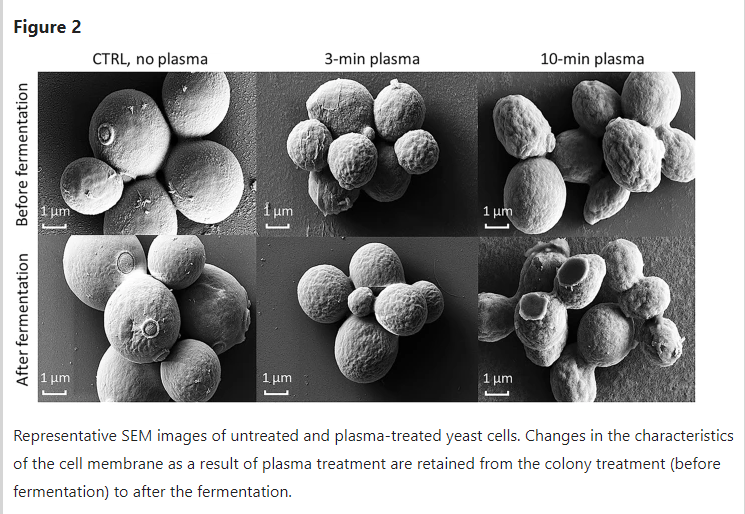
A Correction was issued just days after the PubPeer thread:
“A permission to reproduce was missing in the legend of Figure 2. This change does not affect any results or conclusions of this paper.”
And now? The Queensland University of Technology research ethics department eventually replied to me and announced to investigate this case:
“QUT takes these concerns seriously, and we are assessing this matter in accordance with our policy MoPP D/2.7 Managing and investigating potential breaches of the QUT Code for responsible conduct of research. “
Before he stopped replying, Ostrikov also wrote this to me:
“Maybe we could continue our interactions in the future in some other areas such as helping rebuild Ukrainian science, science communication or something like that? “
Khuilo’s first anniversary – Thoughts on russia’s war on Ukraine
One year of russia’s genocidal war: Things we learned, are slowly learning and haven’t understood yet.
Ostrikov is already at it. In 2022, he joined the board of the German-Ukrainian Core of Excellence project “PLASMA-SPIN Energy” by Max Planck Society and Kharkiv National University, where Ostrikov studied, did PhD and became professor aged merely 29. From the project’s website:
“Day to day new pictures and videos reach us, showing the war in Ukraine with all of its destructive consequences. Our project partners are located in Kharkiv, which is being heavily attacked. Hopefully, they remain safe and we wish them all the strength they need in these difficult days. We hope for the establishment of peace and respectful and peaceful coexistence.”
On 2 March 2022, the same Kharkiv National University was hit by russian missiles. The city has been bombed since, with everything russians have, including tons of cluster munition, countless people died. The Ukrainian Kostya Ostrikov indeed shows how to coexist peacefully with russians and Iranians.

Parts of the above material appeared in earlier Friday Shorts.
I thank all my donors for supporting my journalism. You can be one of them!
Make a one-time donation:
I thank all my donors for supporting my journalism. You can be one of them!
Make a monthly donation:
Choose an amount
Or enter a custom amount
Your contribution is appreciated.
Your contribution is appreciated.
DonateDonate monthly
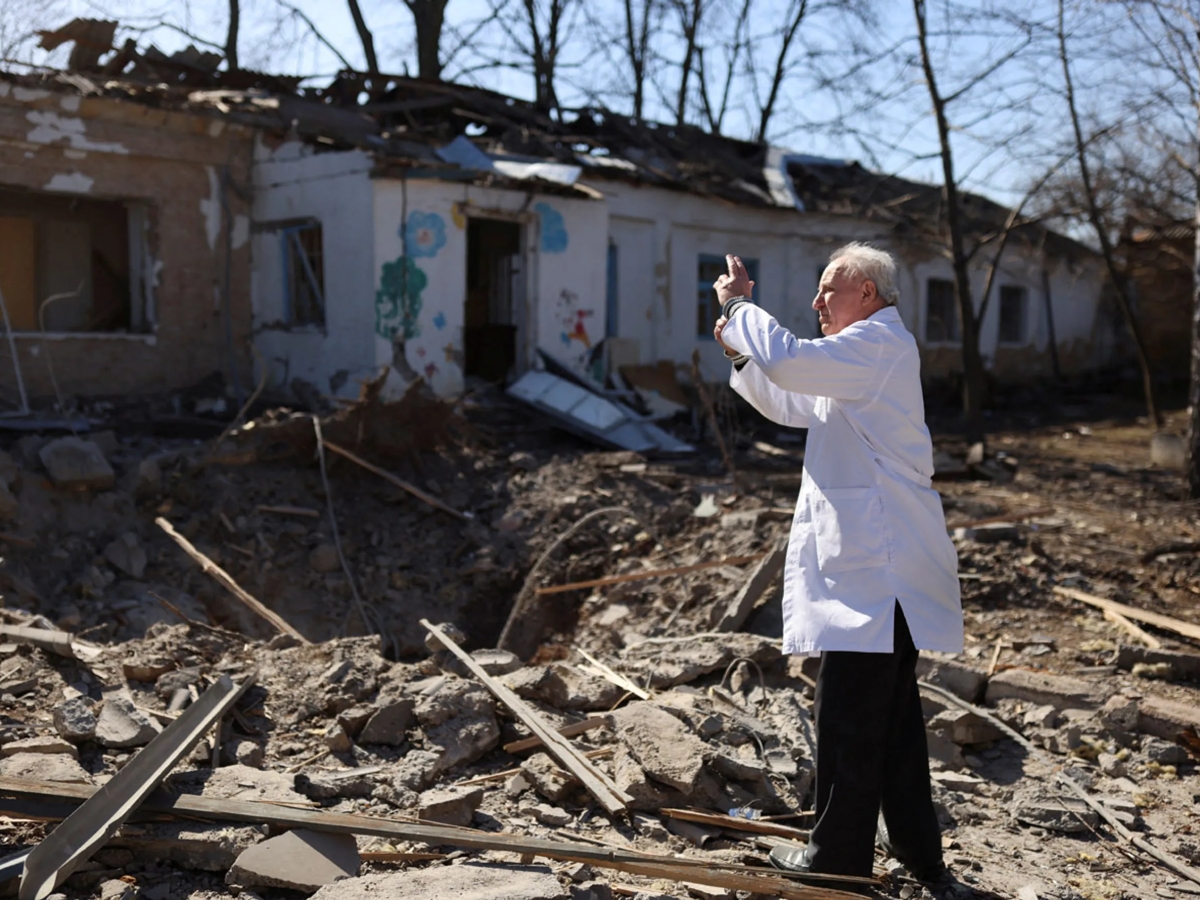









“A Man Without Honor is Worse than Dead.”
~ Miguel de Cervantes Saavedra
LikeLiked by 1 person
You say: “Because it looks just wrong for a Ukrainian scientist to collaborate with russians and Iranians. Especially on fake, likely papermilled studies.”
Of course the latter part is obvious, working on fake and/or papermilled studies does look very wrong. But what is wrong with Ukrainian scientists collaborating with Russian or Iranian ones? I know of many such successful collaborations (and even some marriages, also successful 🙂 )
LikeLike
For same reason one should not do business with russia and iran. Anyone who says science is not political, probably never heard of Dr Mengele and other Nazi scholars.
And yes, russian universities were purged of everyone who was not toeing the line.
I even know someone who lost her job.
Some academics are even in prison, being abused and tortured.
Remember Azat Miftakhov, because he won’t live much longer.
https://theins.ru/news/264836
LikeLike
ahh, and here are russian scientists themselves.
https://x.com/mfphhh/status/1703502979557437613?s=20
Translated:
https://newsland.com/post/7698415-karaganov-podgotovil-sekretnyy-doklad-dlya-putina-migrantam-vse-russkim-deportaciya-v-sibir-i-katorga
“The editors have at their disposal the report “Problems and Lessons of the Recent History of Russian Foreign Policy (and Possibilities for Correction)” prepared by the Council on Foreign and Defense Policy of the Center for Comprehensive European and International Studies of the Faculty of World Economy and International Politics at the National Research University Higher School of Economics. The team of authors of the document is impressive: Emeritus Professor, Scientific Director of the Faculty of World Economy and International Politics at the National Research University Higher School of Economics, Honorary Chairman of the Presidium of the Council on Foreign and Defense Policy Sergei Karaganov; Director of the Situation Analysis Program at the Faculty of World Economics and Politics at the National Research University Higher School of Economics, retired ambassador, member of the Council on Foreign and Defense Policy Alexander Kramarenko; research professor at the Faculty of World Economics and Politics at the National Research University Higher School of Economics, Chairman of the Presidium of the Council on Foreign and Defense Policy, editor-in-chief of the magazine “Russia in Global Affairs” Fyodor Lukyanov; Research Professor at the Faculty of World Economics and Politics at the National Research University Higher School of Economics, member of the Council on Foreign and Defense Policy Dmitry Trenin.
The report was prepared at the request of the Russian Presidential Administration. […]
But the authors talk lightly about the policy of non-proliferation of nuclear weapons. They propose leaving the MTCR regime (Missile Technology Control Regime – editor’s note). “Perhaps there is no need to withdraw from the NPT (Treaty on the Non-Proliferation of Nuclear Weapons – editor’s note) right away; on the contrary, we should support (disingenuously) calls for the eventual elimination of nuclear weapons,” the Higher School of Economics believes. In addition, in their opinion, “it is necessary to consider the issue of supplying technologies that will help Iran produce nuclear weapons” and other countries. “The threat of limited use of nuclear weapons will increase. But a multilateral nuclear deterrence system will also be created. Without it, the multipolar world that we are striving for and in which we could play the role of a balancer will simply not happen,” the authors write. At the same time, they do not analyze what negative consequences for Russia will be entailed by complicity in the proliferation of nuclear weapons around the world. And they, undoubtedly, will be, including through friendly countries.
The Higher School of Economics also proposes to “start a conversation with the leading countries of the World Majority about the possibility (expediency, inevitability) of launching limited nuclear strikes on countries supporting the war in Ukraine, primarily NATO countries.” The authors believe that “leaks of such conversations (which can be encouraged) will help strengthen deterrence.” To intimidate, they call for “recalling family members, and then the diplomats themselves” in countries actively involved in supporting the Kiev junta (Lithuania, Latvia, Poland, Germany, Slovakia, Czech Republic, Romania, etc.)”, calling on Russian citizens to leave these countries, and then all civilians.
“If the Westerners back down, they can be “rewarded” by softening the level of warnings and threats, increasing the diplomatic presence,” the authors of the document believe, without, however, indicating what to do if the threats do not have an effect.




If we talk about Ukraine, the team of authors considers it reasonable within the framework of the Northern Military District to annex the south-eastern regions of Ukraine, followed by “intensive ideological indoctrination similar to that of the GDR with the displacement of nationalist elements.” “Do not annex most of the Right Bank, but destroy the transport, energy, industrial infrastructure, turning the region (possibly dividing it with its neighbors) into an agricultural outskirts, preventing its use for military purposes (puppet government(s), military bases),” they suggest They. The main thing in resolving the “Ukrainian issue,” in their opinion, is to transform the region into “a friendly buffer on our borders with the West.” The authors believe that a program is needed to resettle 1–2 million people to existing cities in Siberia, as well as to develop new spaces. They propose to send prisoners of war and convicts during the Northern War to the construction of transport routes, especially meridian ones, connecting Russia with Asia and with the Arctic Ocean. “
LikeLike
Asking this question, it is evident that you’re not the sharpest tool in the shed.
How would you call a collaborator with the enemy? And the actual collaborative activity? A traitor and a treason.
What’s the punishment for traitors committing treason in your country, tv radio point?
LikeLike
Not the one to whom the question is addressed, but I can suggest a plausible answer.
You win the next elections.
LikeLiked by 1 person
Unfortunately you are right.
LikeLike
You pose a valid question, but luckily there is a valid answer.
Leaving alone the matter of papermilling, in my opinion it would be OK if an Ukrainian person was collaborating with a Russian one, but only when the latter didn’t work for a Russian institution/company.
LikeLiked by 1 person